Dive into Shawnee National Forest's wonders! Your guide to its vibrant wildlife, top trails, and cozy campsites, complete with safety tips and adventures.
Ever wished for a magical place where wildlife waltzes and trails tell tales? Say hello to Shawnee National Forest in Southern Illinois!
This isn’t just any forest—it’s our treasured escape filled with cheeky raccoons, majestic bald eagles, and, yep, even the elusive bobcat.
Over three decades, we’ve pitched tents, hiked trails, and whispered with the wildlife. And guess what? We’re about to give you the insider scoop!
Dive in for a roller-coaster of experiences from spotting the white-tailed deer to unwinding under the stars at the best campsites. And hey, safety first, right? We’ve got your back with top-notch tips for cozy encounters with Shawnee’s wild residents.
So, ready to step into nature’s embrace where every footstep is a new adventure? Join us, fellow wanderer!
Shawnee National Forest: Know Before You Go
Shawnee National Forest spans over 280,000 acres, cradled between the Mississippi and Ohio Rivers.
A mosaic of habitats, from dense forests and shimmering wetlands to expansive grasslands, forms the backdrop for myriad wildlife, including bobcats, black bears, white-tailed deer, and the soaring bald eagle.
Established in 1939, Shawnee’s allure also lies in its rich tapestry of history, from ancient Native American tales to the legacy of pioneers and conservationists.
Location and Accessibility
Getting There: Shawnee is easily reachable by car, with multiple entry points peppered throughout. Major neighboring cities include Carbondale, Marion, and Harrisburg.
Air Travel: After landing at Lambert-St. Louis International Airport (STL) or Nashville International Airport (BNA), rental car services are readily available for your journey to the forest, roughly a 2-3 hour drive.
Parking: There are several designated parking areas within the forest, some of which may require a small fee.
The Forest and it’s Landscape
Shawnee National Forest’s rich topography consists of the following facets:
Diverse Habitats
From old-growth hardwood forests and wetlands to grasslands, each area has distinct wildlife and plant life.
Old-Growth Hardwood Forests: These ancient woods, including oak and hickory trees, provide a habitat for diverse wildlife like the white-tailed deer, wild turkey, and the endangered Indiana bat.
Wetlands: A thriving ecosystem, the wetlands are home to beavers, river otters, and an array of amphibians. Birdwatchers can spot herons, kingfishers, and other waterfowl in these marshy zones.
Grasslands: Contrasting the forested areas, the grasslands support populations of bobcats, coyotes, and numerous butterfly species. These areas become especially lively in spring, painted with wildflowers like purple coneflower and prairie blazing star.
Geological Wonders
Discover the mesmerizing rock formations, rugged bluffs, and serene water bodies that have been shaped over millennia.
Rock Formations: One of the highlights includes the “Garden of the Gods,” where sandstone formations rise dramatically against the backdrop of thick woods. Each formation tells a story, like the Camel Rock or the Anvil Rock.
Rugged Bluffs: Offering panoramic views, places like the “Little Grand Canyon” are a testament to the erosive power of water, carving deep valleys and intricate gorges over time.
Serene Water Bodies: From the placid waters of Pounds Hollow Lake, ideal for fishing and swimming, to the streams cascading down Burden Falls, the water features are as diverse as they are breathtaking.
Historical Significance
Shawnee echoes tales of ancient Native American tribes, early pioneers, and conservation efforts. Don’t miss the various historical and archaeological sites scattered throughout the forest.
Ancient Native American Tribes: Archaeological treasures like petroglyphs at “Millstone Bluff” offer a glimpse into the lives and beliefs of the tribes that once inhabited these lands.
Pioneers and Settlers: “Stone Face,” a natural rock formation, was used as a reference point by early settlers, while places like “Cave-In-Rock” have legends of pirates and bandits using the caverns.
Conservation Efforts: Established in 1939, the forest is also a testament to the Civilian Conservation Corps’ efforts under the New Deal. Their legacy can be seen in structures and trails they developed, preserving the land for future generations.
Wildlife of Shawnee National Forest
The biodiversity of Shawnee National Forest stands as a testament to nature’s intricate tapestry of life. Spanning across varied habitats from dense hardwood forests to sprawling grasslands and tranquil wetlands, the forest provides sanctuary to an array of species, each contributing to the delicate balance of its ecosystem.
But why is this biodiversity crucial?
Firstly, it ensures that each species can play its role in the ecosystem, whether as predator, prey, pollinator, or decomposer.
This interconnected web of life helps maintain ecological equilibrium, allowing the forest to flourish. A diverse ecosystem also aids in natural processes, from soil fertility to water purification, which indirectly benefits surrounding communities.
Moreover, Shawnee’s rich biodiversity offers scientists a unique opportunity to study various species in their natural habitats. Insights drawn from these studies can inform efforts to conserve other ecosystems worldwide.
However, with the looming threats of climate change, habitat destruction, and human intervention, the preservation of Shawnee’s biodiversity becomes paramount.
By protecting its myriad species and their habitats, we ensure that future generations can marvel at the forest’s natural wonders, just as we do today.
In the sections that follow, we will delve deep into the fascinating world of Shawnee’s wildlife, highlighting 22 incredible species that call this forest home.
22 Animals in Shawnee National Forest We Encountered
During our unforgettable adventure in Shawnee National Forest, we encountered a variety of fascinating creatures that call this diverse ecosystem home. In this section, we will share our personal wildlife sightings, offering a glimpse into the amazing biodiversity that awaits you in the forest.
White-tailed Deer
Imagine the thrill of encountering the graceful and majestic white-tailed deer in Shawnee National Forest!
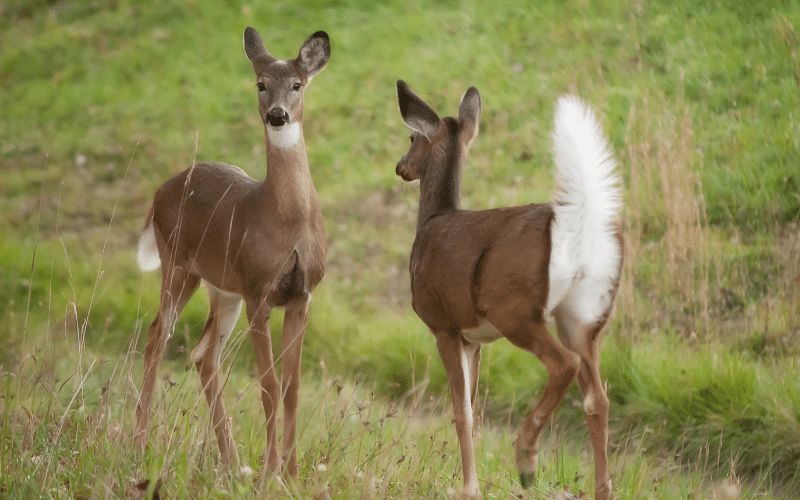
These elegant creatures, known for their distinctive white tails and impressive antlers, are a true delight to observe as they bound effortlessly through the woods.
As herbivores, they feast on a smorgasbord of leaves, twigs, fruits, and grasses that the forest provides.
Where to find them
White-tailed deer are frequently spotted throughout Shawnee National Forest.
You can increase your chances of encountering them at popular campgrounds such as the Pine Hills or Camp Cadiz.
To further immerse yourself in their habitat, take a hike on the River to River Trail or the Little Grand Canyon Trail, which wind through the forest and grasslands where they thrive.
Best time to see them
Early morning and late afternoon hours are prime times to spot these magnificent creatures, as they are most active during these periods.
Autumn is particularly exceptional for deer sightings, as it is their mating season.
Black Bear
Prepare to be awestruck by the incredible presence of black bears in Shawnee National Forest!
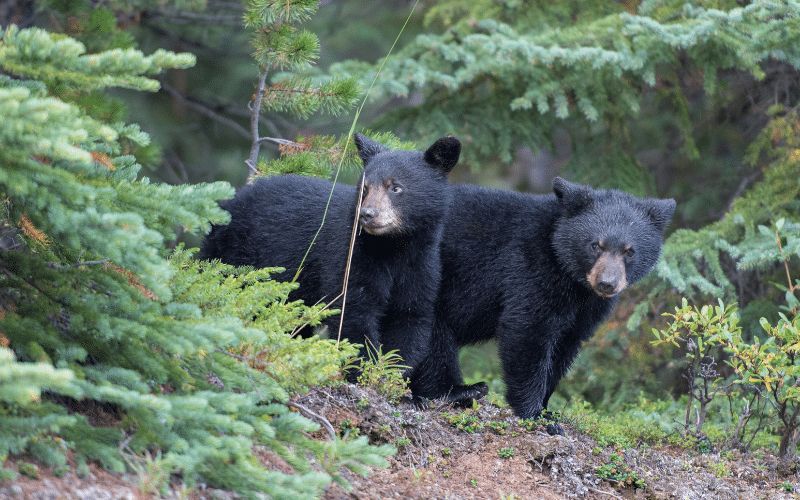
These magnificent and powerful beasts are a true testament to the forest’s thriving ecosystem.
As omnivores, black bears enjoy a varied diet that includes berries, nuts, insects, and the occasional small mammal.
Catching a glimpse of these amazing creatures is an unforgettable experience.
Where to find them
Black bears tend to inhabit densely wooded areas within the forest, particularly near water sources.
You may increase your chances of spotting them by visiting campgrounds like the Garden of the Gods or Lusk Creek Canyon.
For an adventurous hike, try exploring the Bear Branch Trail or the Indian Point Trail, which lead through the bear’s natural habitat.
Best time to see them
Spring and early summer are the ideal times to witness black bears as they emerge from hibernation and become more active in their search for food.
Wild Turkey
Get ready for an exciting encounter with the fascinating wild turkey in Shawnee National Forest!
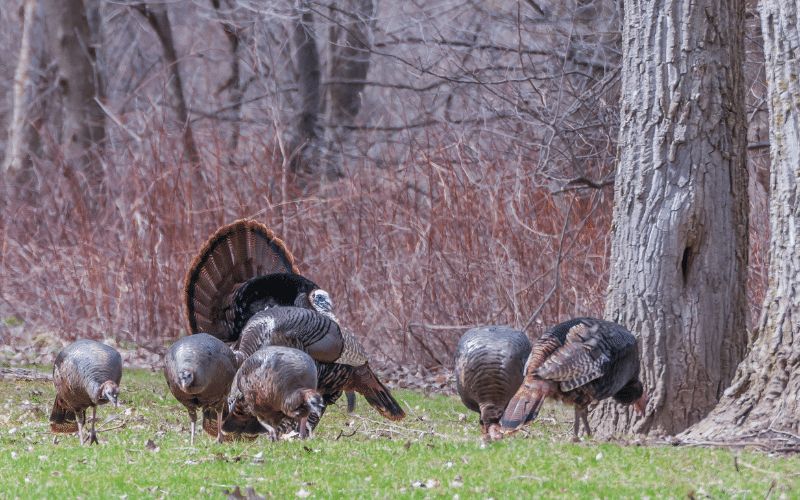
These striking birds, with their iridescent feathers and characteristic fan-shaped tails, are a captivating sight as they forage for seeds, insects, and small vertebrates.
Observing these magnificent birds in their natural habitat is a truly unforgettable experience.
Where to find them
Wild turkeys are often seen in forested areas, grasslands, and near water sources within Shawnee National Forest.
Campgrounds such as Oak Point and Johnson Creek offer excellent opportunities for turkey sightings.
For an immersive experience, hike along the Garden of the Gods Observation Trail or the Rim Rock Recreational Trail, which traverse areas favored by wild turkeys.
Best time to see them
Spring is the prime time for spotting wild turkeys, as they become more active during their breeding season.
Early morning and late afternoon hours are ideal for observing these intriguing birds.
Beavers
Witness the incredible architectural feats of the North American beaver in Shawnee National Forest!
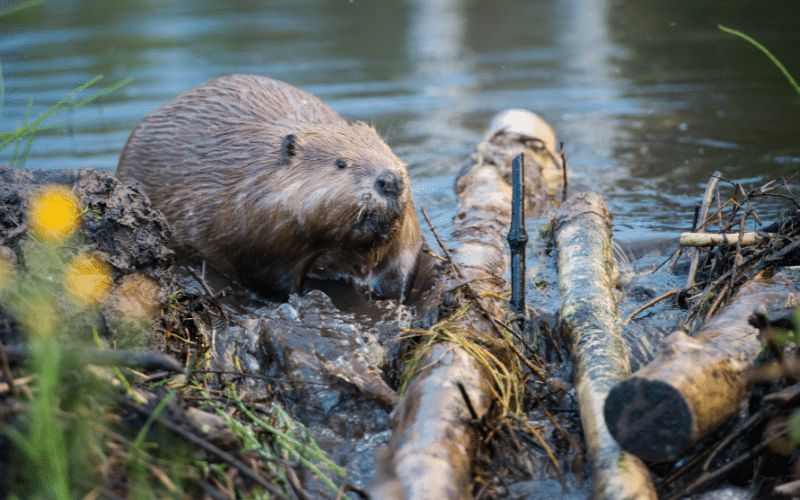
These industrious rodents are renowned for their ability to construct dams and lodges, transforming the landscape to suit their needs.
As they busily gnaw on trees and gather branches, beavers play a vital role in maintaining the health and diversity of the forest ecosystem.
Where to find them
Beavers can be found near water sources such as rivers, lakes, and marshes throughout Shawnee National Forest.
The Pine Ridge Campground and Lake Glendale Recreation Area are great spots to observe beaver activity.
For a closer look at their habitats, hike along the Beaver Trail or the Pounds Hollow Lake Trail, which pass through areas frequented by these remarkable animals.
Best time to see them
Beavers are most active during the early evening and nighttime hours.
Spring and summer are excellent times to observe them as they busily build and maintain their dams and lodges.
Bobcat
Prepare for an exhilarating encounter with the elusive bobcat in Shawnee National Forest! These remarkable felines, with their distinctive tufted ears and sleek, spotted coats, are a sight to behold as they silently stalk their prey.
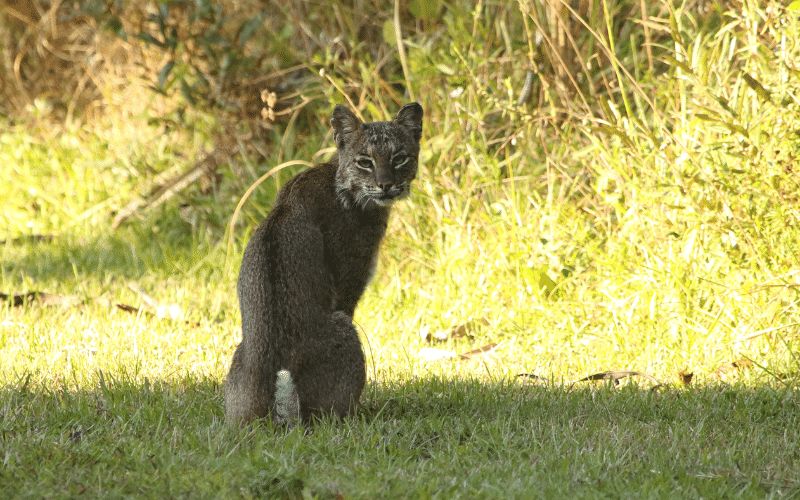
As skilled hunters, bobcats play an essential role in maintaining the balance of the forest ecosystem.
Where to find them
Bobcats are primarily found in dense forests, rocky outcrops, and brushy areas within Shawnee National Forest.
To increase your chances of spotting one, visit campgrounds such as Cedar Lake or Turkey Bayou.
For an adventurous hike, explore the Panther Den Wilderness Loop or the Sand Cave Trail, which lead through the bobcat’s preferred habitats.
Best time to see them
Bobcats are most active during dawn and dusk, making these times ideal for sightings.
Winter is a particularly favorable season for spotting these elusive creatures, as they become more visible against the snow-covered landscape.
Coyote
Experience the thrill of spotting the resourceful and intelligent coyote in Shawnee National Forest!
These adaptable canids, with their sleek coats and piercing eyes, are captivating to observe as they navigate the diverse landscapes of the forest.

As both hunters and scavengers, coyotes play a vital role in controlling rodent populations and maintaining the ecosystem’s balance.
Where to find them
Coyotes can be encountered in various habitats within Shawnee National Forest, from forests and grasslands to the edges of campgrounds.
You might increase your chances of sighting a coyote by visiting campgrounds such as Camp Ondessonk or Pharaoh Campground.
For a hike through coyote territory, try the Lusk Creek Canyon Trail or the Snake Road Trail, which wind through areas favored by these fascinating animals.
Best time to see them
Coyotes are most active during dawn and dusk hours, making these times perfect for sightings.
Spring and fall are particularly good seasons for spotting coyotes, as they search for food and raise their young.
The US Forest Service also recommends that campers take preventative measures to avoid attracting coyotes, such as keeping food and garbage securely stored away.
Bald Eagles
Marvel at the awe-inspiring sight of bald eagles soaring through the skies of Shawnee National Forest!
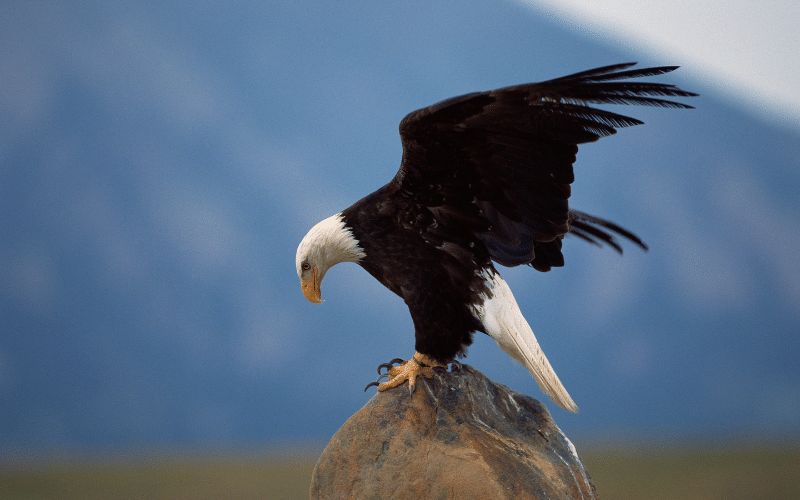
These majestic birds, with their striking white heads and powerful wingspans, are a symbol of freedom and a testament to the thriving ecosystem of the forest.
Observing bald eagles in their natural habitat is a truly unforgettable experience.
Where to find them
Bald eagles are commonly found near water sources within Shawnee National Forest, where they hunt for fish and other aquatic prey.
Campgrounds such as Lake Kinkaid and Pine Hills offer excellent opportunities for eagle sightings.
To immerse yourself in their habitat, hike along the Cedar Lake Trail or the LaRue Pine Hills Trail, which pass through areas frequented by these magnificent birds.
Best time to see them
Winter is the prime time for spotting bald eagles, as they gather near open water sources to hunt for fish.
Early morning and late afternoon hours are ideal for observing these majestic creatures in flight.
Peregrine Falcons
Get ready to be amazed by the lightning-fast aerial acrobatics of the peregrine falcon in Shawnee National Forest!
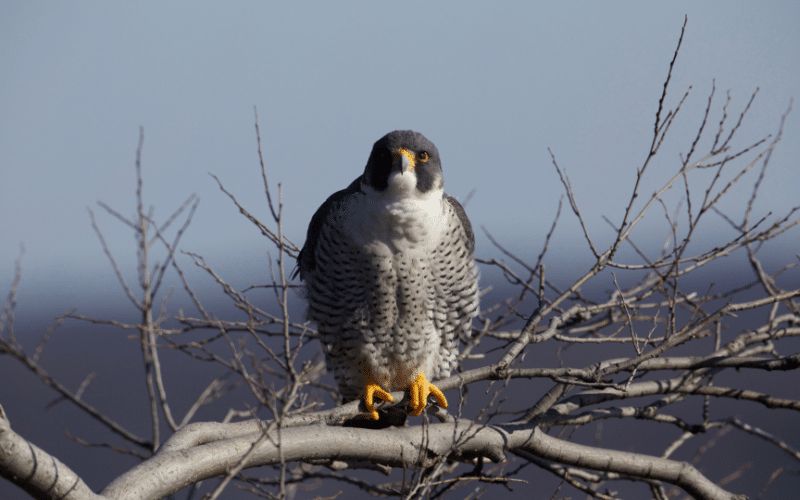
These stunning birds, known for their incredible speed and precision, are a sight to behold as they dive and swoop in pursuit of their prey.
Witnessing these aerial hunters in action is a truly exhilarating experience.
Where to find them
Peregrine falcons can be spotted in areas with cliffs, rock outcrops, and open spaces within Shawnee National Forest.
Campgrounds such as Jackson Falls or Burden Falls offer excellent vantage points for falcon sightings.
For a hike through peregrine falcon territory, try the Millstone Bluff Trail or the Pomona Natural Bridge Trail, which pass through areas favored by these impressive birds.
Best time to see them
Spring and summer are the ideal times to observe peregrine falcons, as they become more active during their breeding season.
Keep an eye out during mid-morning and late afternoon hours for the best chances of witnessing their incredible aerial displays.
Red-cockaded Woodpecker
Experience the captivating sight and sound of the red-cockaded woodpecker in Shawnee National Forest!
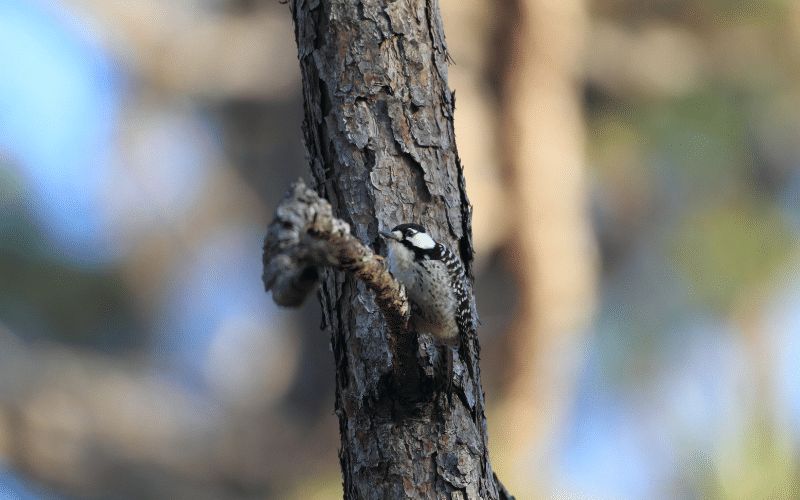
These remarkable birds, with their striking black-and-white plumage and distinctive red markings, are a delight to watch as they hammer away at tree trunks in search of insects.
Observing these fascinating woodpeckers in action is a truly enchanting experience.
Where to find them
Red-cockaded woodpeckers can be found in mature pine forests within Shawnee National Forest.
Campgrounds such as Tower Rock and Bell Smith Springs are prime spots for woodpecker sightings.
For a hike through their preferred habitat, try the Bay Creek Trail or the Stonefort Trail, which pass through areas frequented by these industrious birds.
Best time to see them
Spring and summer are ideal times to spot red-cockaded woodpeckers, as they become more active during their breeding season.
Early morning and late afternoon hours are perfect for observing these busy birds as they forage for food and tend to their nests.
Eastern Box Turtle
Delight in the charming presence of the eastern box turtle in Shawnee National Forest!
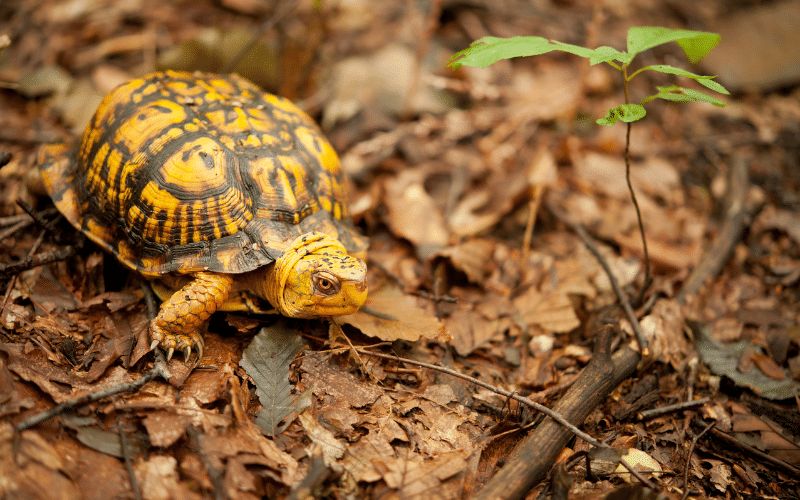
These colorful and endearing reptiles, with their distinctive domed shells and vibrant markings, are a joy to encounter as they slowly navigate the forest floor.
Watching these gentle creatures in their natural habitat is a heartwarming experience.
Where to find them
Eastern box turtles are commonly found in wooded areas, grasslands, and near water sources within Shawnee National Forest.
Campgrounds such as Pounds Hollow and Pennant Bar offer excellent opportunities for turtle sightings.
For an immersive hike, explore the Heron Pond Trail or the Ferne Clyffe Trail, which lead through areas favored by these charismatic reptiles.
Best time to see them
Spring and summer are the prime seasons to spot eastern box turtles, as they become more active during warmer months.
Keep an eye out for them during mid-morning and early afternoon hours, when they are most likely to be out and about.
Eastern box turtles are threatened by habitat destruction due to logging, road building, and urban development.
As humans encroach on their habitats it becomes more difficult for these turtles to find food and suitable nesting grounds.
If you visit Shawnee National Forest make sure to keep your eyes open for one of these fascinating creatures!
The Endangered Indiana Bat
Discover the mysterious world of the endangered Indiana bat in Shawnee National Forest!
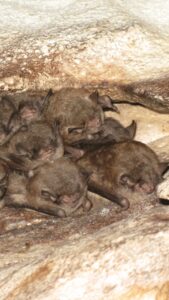
These small and elusive mammals, with their dark brown fur and distinctive mouse-like ears, play a crucial role in controlling insect populations and maintaining the balance of the forest ecosystem.
Witnessing these nocturnal creatures in action is an extraordinary experience.
Where to find them
Indiana bats are known to roost in dense forests and caves within Shawnee National Forest.
Campgrounds such as Dixon Springs and Cave-In-Rock provide opportunities for bat sightings.
For a chance to spot these elusive creatures, hike along the Hickory Ridge Trail or the Indian Kitchen Trail, which pass through areas inhabited by the Indiana bat.
Best time to see them
The best time to observe Indiana bats is during the summer months, particularly at dusk when they emerge from their roosts to feed on insects.
Keep an eye out near cave entrances and dense forest areas for the best chances of witnessing these fascinating creatures.
Eastern Gray Treefrog
Embark on a thrilling adventure to find the elusive eastern gray treefrog in Shawnee National Forest!
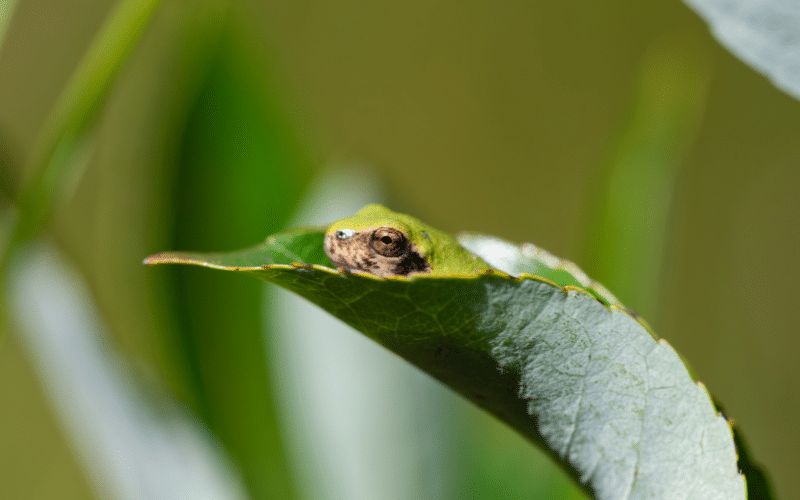
These small and cryptic amphibians, with their remarkable camouflage abilities and distinctive vocalizations, are a fascinating sight as they cling to tree branches and vegetation.
Observing these well-adapted tree frogs in their natural habitat is a truly enchanting experience.
Where to find them
Eastern gray treefrogs inhabit wooded areas, wetlands, and swamps within Shawnee National Forest.
Campgrounds such as Dutchman Lake and Cache River offer excellent opportunities for treefrog sightings.
For an immersive hike, explore the Tunnel Hill Trail or the Devil’s Backbone Trail, which pass through areas frequented by these enchanting amphibians.
Best time to see them
Spring and summer are the prime seasons to spot eastern gray treefrogs, as they become more active during their breeding season.
Keep an ear out for their distinctive calls during evening and nighttime hours, when they are most vocal and active.
Eastern Cottontail Rabbit
Delight in the adorable presence of the eastern cottontail rabbit in Shawnee National Forest!
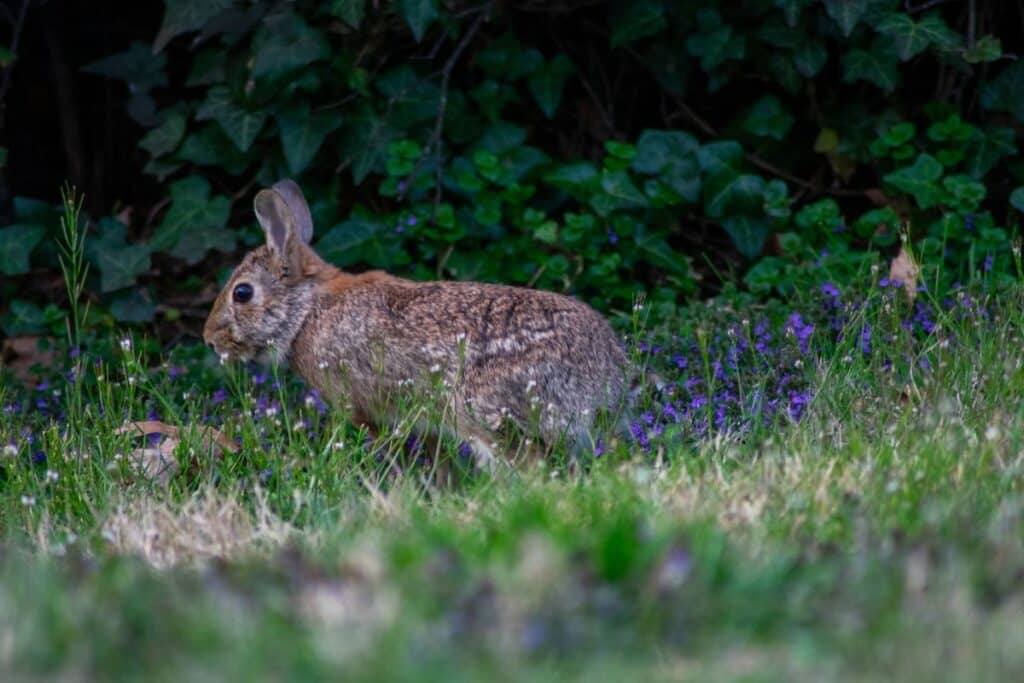
These endearing creatures, with their soft, brown fur and distinctive white tails, are a joy to encounter as they hop through the forest, nibbling on grasses and vegetation.
Observing these charming animals in their natural habitat is a heartwarming experience.
Where to find them
Eastern cottontail rabbits are commonly found in grasslands, meadows, and forest edges within Shawnee National Forest.
Campgrounds such as Oakwood Bottoms and Pine Hills offer excellent opportunities for rabbit sightings.
For an immersive hike, explore the Godwin Trail or the Double Branch Hole Trail, which lead through areas favored by these adorable creatures.
Best time to see them
Early morning and late afternoon hours are ideal for spotting eastern cottontail rabbits, as they are most active during these times.
Spring and summer are particularly favorable seasons for rabbit sightings, as they emerge to feed on fresh vegetation.
Raccoons
Encounter the inquisitive and resourceful raccoon in Shawnee National Forest!
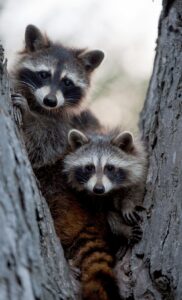
These adaptable mammals, with their distinctive black masks and ringed tails, are fascinating to watch as they forage for food and explore their surroundings.
Observing these clever creatures in action is a truly captivating experience.
Where to find them
Raccoons can be found in various habitats within Shawnee National Forest, from dense forests to the edges of campgrounds.
To increase your chances of spotting a raccoon, visit campgrounds such as Sugar Creek or Lake Murphysboro.
For a hike through raccoon territory, try the Little Lusk Trail or the Kinkaid Lake Trail, which wind through areas frequented by these curious animals.
Best time to see them
Raccoons are most active during nighttime hours, making dusk and early night the perfect times for sightings.
Spring and fall are particularly good seasons for spotting raccoons, as they forage for food and prepare for winter.
Opossums
Discover the intriguing world of the opossum in Shawnee National Forest!
These unique marsupials, with their prehensile tails and distinctive white faces, are a fascinating sight as they scurry through the underbrush and climb trees in search of food.
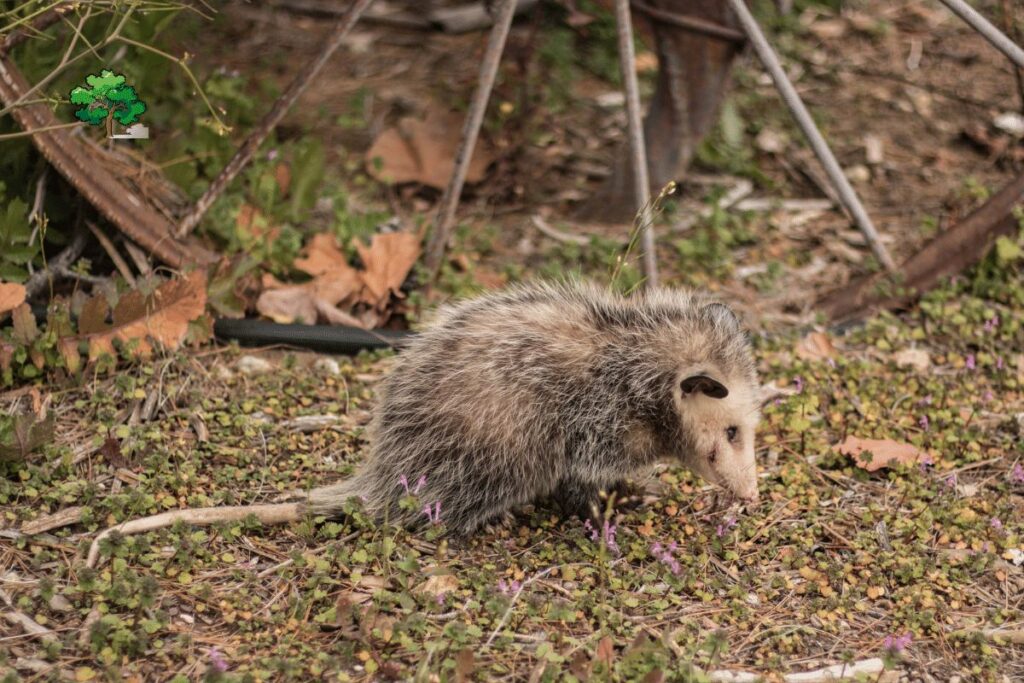
Witnessing these nocturnal creatures in their natural habitat is an extraordinary experience.
Where to find them
Opossums can be found in wooded areas and near water sources within Shawnee National Forest. Campgrounds such as Camp Cadiz and Lake Glendale offer excellent opportunities for opossum sightings.
For an immersive hike, explore the Rocky Comfort Trail or the Trigg Observation Tower Trail, which pass through areas inhabited by these remarkable animals.
Best time to see them
The best time to observe opossums is during the nighttime hours, particularly at dusk when they emerge from their dens to feed on insects, fruits, and other small animals.
Keep an eye out near the forest floor and in trees for the best chances of witnessing these captivating creatures.
Red Fox
Experience the enchanting sight of the elusive red fox in Shawnee National Forest!
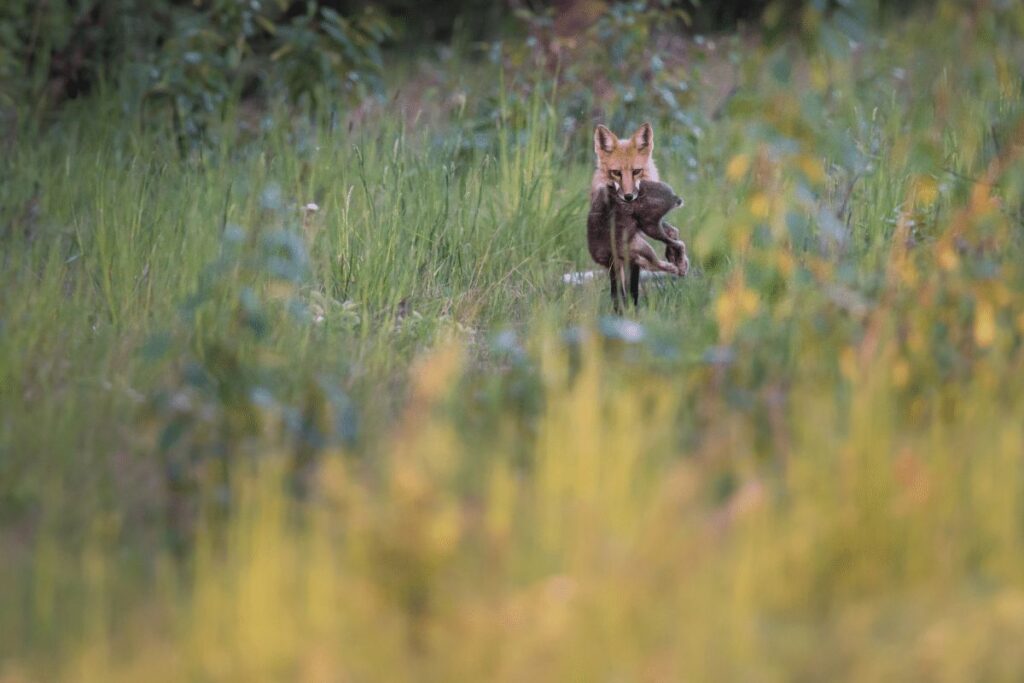
These graceful canids, with their vibrant red coats and bushy tails, are captivating to watch as they stealthily navigate the forest in search of prey.
Observing these skilled hunters in their natural habitat is a truly mesmerizing experience.
Where to find them
Red foxes inhabit various environments within Shawnee National Forest, from forests and grasslands to the edges of campgrounds.
You might increase your chances of spotting a red fox by visiting campgrounds such as Little Grassy Lake or Boulder Recreational Area.
For a hike through fox territory, try the Touch of Nature Trail or the High Knob Trail, which wind through areas favored by these fascinating animals.
Best time to see them
Red foxes are most active during dawn and dusk hours, making these times perfect for sightings.
Spring and fall are particularly good seasons for spotting red foxes, as they search for food and raise their young.
River Otters
Delight in the playful antics of the river otter in Shawnee National Forest!
These agile and energetic mammals, with their sleek, streamlined bodies and powerful tails, are a joy to watch as they glide through the water in search of fish and other aquatic prey.
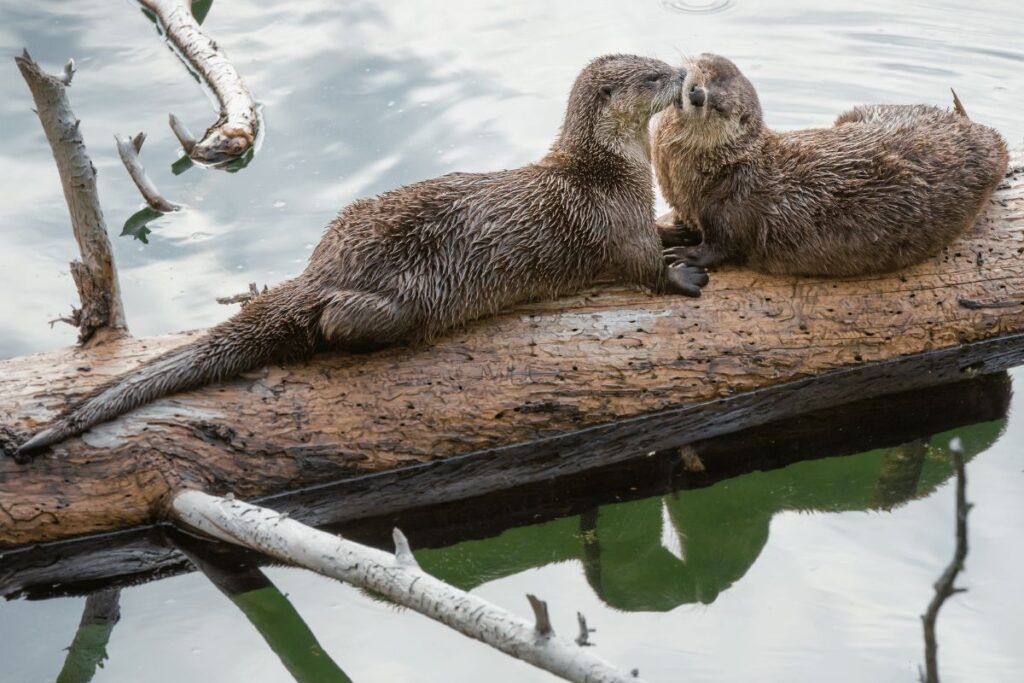
Observing these sociable creatures in their natural habitat is a heartwarming experience.
Where to find them
River otters are commonly found near water sources such as rivers, lakes, and marshes within Shawnee National Forest.
Campgrounds such as Devils Kitchen Lake and Crab Orchard Lake offer excellent opportunities for otter sightings.
For an immersive hike, explore the Cache River Wetlands Trail or the Saline River Trail, which lead through areas frequented by these charismatic mammals.
Best time to see them
Early morning and late afternoon hours are ideal for spotting river otters, as they are most active during these times.
Spring and summer are particularly favorable seasons for otter sightings, as they emerge to feed and play in the warm weather.
Red-tailed Hawks
Marvel at the awe-inspiring sight of red-tailed hawks soaring through the skies of Shawnee National Forest!
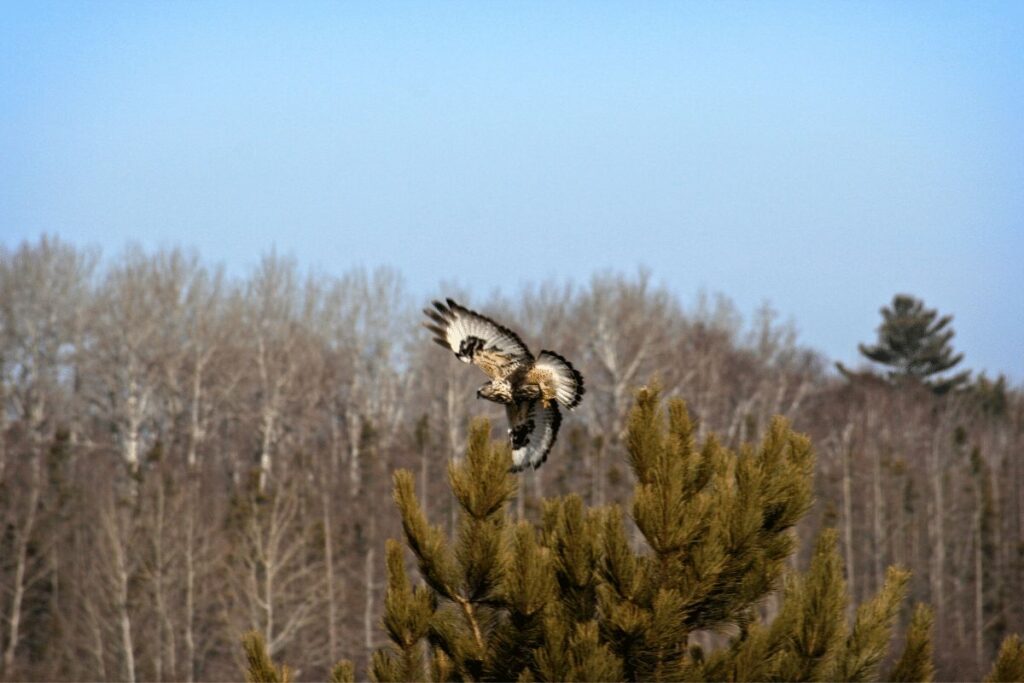
These majestic birds, with their powerful wingspans and distinctive reddish-brown tails, are a testament to the thriving ecosystem of the forest.
Observing these impressive raptors in their natural habitat is a truly unforgettable experience.
Where to find them
Red-tailed hawks can be found in a variety of habitats within Shawnee National Forest, including forests, grasslands, and open areas.
Campgrounds such as Camp Manitowa and Camp Ondessonk offer excellent vantage points for hawk sightings.
To immerse yourself in their habitat, hike along the Bald Knob Cross Trail or the Backbone Trail, which pass through areas frequented by these magnificent birds.
Best time to see them
Spring and fall are the prime times for spotting red-tailed hawks, as they migrate and search for food.
Keep an eye on the sky during mid-morning and late afternoon hours for the best chances of witnessing these majestic creatures in flight.
Eastern Box Turtles
Delight in the charming presence of the eastern box turtle in Shawnee National Forest!
These colorful and endearing reptiles, with their distinctive domed shells and vibrant markings, are a joy to encounter as they slowly navigate the forest floor.
Watching these gentle creatures in their natural habitat is a heartwarming experience.
Where to find them
Eastern box turtles are commonly found in wooded areas, grasslands, and near water sources within Shawnee National Forest. Campgrounds such as Pounds Hollow and Pennant Bar offer excellent opportunities for turtle sightings.
For an immersive hike, explore the Heron Pond Trail or the Ferne Clyffe Trail, which lead through areas favored by these charismatic reptiles.
Best time to see them
Spring and summer are the prime seasons to spot eastern box turtles, as they become more active during warmer months.
Keep an eye out for them during mid-morning and early afternoon hours, when they are most likely to be out and about.
Timber Rattlesnakes
Embrace the thrill of encountering the elusive timber rattlesnake in Shawnee National Forest!
These impressive reptiles, with their distinctive patterns and powerful venom, are a fascinating sight as they bask in the sun or coil up in wait for prey.
Observing these formidable predators in their natural habitat is an adrenaline-pumping experience.
Where to find them
Timber rattlesnakes can be found in wooded and rocky areas within Shawnee National Forest. Campgrounds such as Johnson Creek and Simpson Campground offer opportunities for rattlesnake sightings. For a hike through rattlesnake territory, try the Burden Falls Trail or the Panther Den Trail, which pass through areas inhabited by these fascinating creatures.
Best time to see them
The best time to observe timber rattlesnakes is during the late spring and early fall, when they are most active.
Keep an eye out near sunny spots and rocky outcrops for the best chances of witnessing these captivating reptiles.
Eastern Massasauga Rattlesnakes
Discover the secretive world of the eastern Massasauga rattlesnake in Shawnee National Forest!
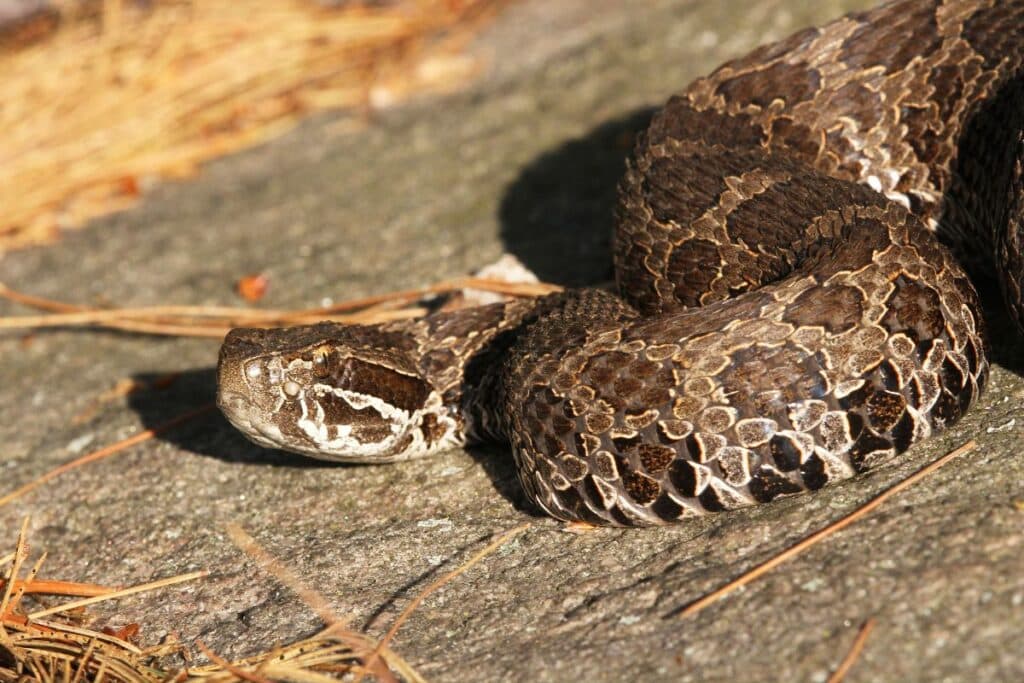
These small and cryptic rattlesnakes, with their distinctive gray and black patterns, play a crucial role in controlling rodent populations and maintaining the balance of the forest ecosystem.
Witnessing these elusive creatures in their natural habitat is an extraordinary experience.
Where to find them
Eastern massasauga rattlesnakes inhabit wetlands, grasslands, and forests within Shawnee National Forest. Campgrounds such as Lusk Creek and Grant’s Pass offer opportunities for rattlesnake sightings.
For a chance to spot these elusive creatures, hike along the Rim Rock Trail or the Jackson Falls Trail, which pass through areas frequented by the eastern massasauga rattlesnake.
Best time to see them
The best time to observe eastern massasauga rattlesnakes is during the late spring and early fall, when they are most active.
Keep an eye out near sunny spots, wetlands, and grassy areas for the best chances of witnessing these fascinating creatures.
Various Species of Amphibians and Reptiles
Explore the diverse world of amphibians and reptiles in Shawnee National Forest!
From frogs and salamanders to snakes and lizards, the forest is teeming with a wide array of fascinating creatures, each with their unique adaptations and behaviors.
Observing this incredible biodiversity up close is a truly awe-inspiring experience.
Where to find them:
Amphibians and reptiles can be found in various habitats within Shawnee National Forest, including wetlands, forests, and grasslands.
Campgrounds such as Turkey Bayou and Cedar Lake offer excellent opportunities for sightings of these diverse creatures.
For an immersive hike, explore the Little Grand Canyon Trail or the Eddyville Blacktop Trail, which lead through areas inhabited by a variety of amphibians and reptiles.
Best time to see them
Spring and summer are the prime seasons to spot amphibians and reptiles, as they become more active during warmer months. Keep an eye out near water sources, forest floors, and sunny spots for the best chances of witnessing these captivating creatures.
Safety Tips for Wildlife Encounters
Encountering wildlife can be one of the most thrilling experiences while visiting Shawnee National Forest.
However, it’s essential to prioritize safety and respect for the animals’ natural habitats.
Here are some vital safety tips for campers when encountering wildlife, referencing the first article:
Maintain a Safe Distance from Wildlife
Always keep a safe distance from animals, as getting too close may stress or provoke them. As a general rule, maintain a distance of at least 100 yards from larger animals like bears, and 25 yards from smaller wildlife such as deer.
Do Not Approach, Feed, or Disturb Animals
Never approach, feed, or disturb wildlife. Feeding wild animals can alter their natural behavior, making them more aggressive or dependent on humans, which can be dangerous for both the animals and visitors.
Keep Food and Garbage Properly Stored
Properly store food, garbage, and other items with strong odors to avoid attracting wildlife to your campsite. Use bear-resistant containers or hang food in trees away from your sleeping area.
Stay on Designated Trails
Stick to designated trails while hiking to minimize the risk of unexpected encounters with wildlife and reduce your impact on their natural habitats.
Carry Bear Spray
Carry bear spray with you and know how to use it. It can be an effective deterrent in the event of a close encounter with a bear or other large predator.
Make Noise While Hiking
Make noise while hiking, especially when visibility is limited, to alert wildlife of your presence. Most animals will avoid humans if they are aware of them.
Travel in Groups
Travel in groups whenever possible, as larger groups are less likely to be approached by wildlife. In addition, groups can make more noise, which can help deter animals.
Follow Recommendations for Bear, Cougar, and Wolf Encounters
In the event of an encounter with a bear, cougar, or wolf, it’s essential to know what to do. Generally, do not run or turn your back, as this may trigger a chase response. Instead, speak calmly and firmly while slowly backing away.
Make yourself look larger by raising your arms and standing on your tiptoes. If the animal approaches, try to use bear spray or throw objects to deter it without bending down.
In the unlikely event of an attack, fight back aggressively, focusing on the animal’s face and muzzle.
By following these safety tips, you can ensure a more enjoyable and secure experience in Shawnee National Forest while respecting the wildlife that calls it home.
Trails in Shawnee National Forest
Shawnee National Forest is not just a realm of verdant expanses; it’s a treasure trove of trails that beckon hikers of all levels. Offering a diverse range of hiking opportunities, each path unveils a unique facet of the forest’s beauty, from undulating terrains to jaw-dropping natural marvels.
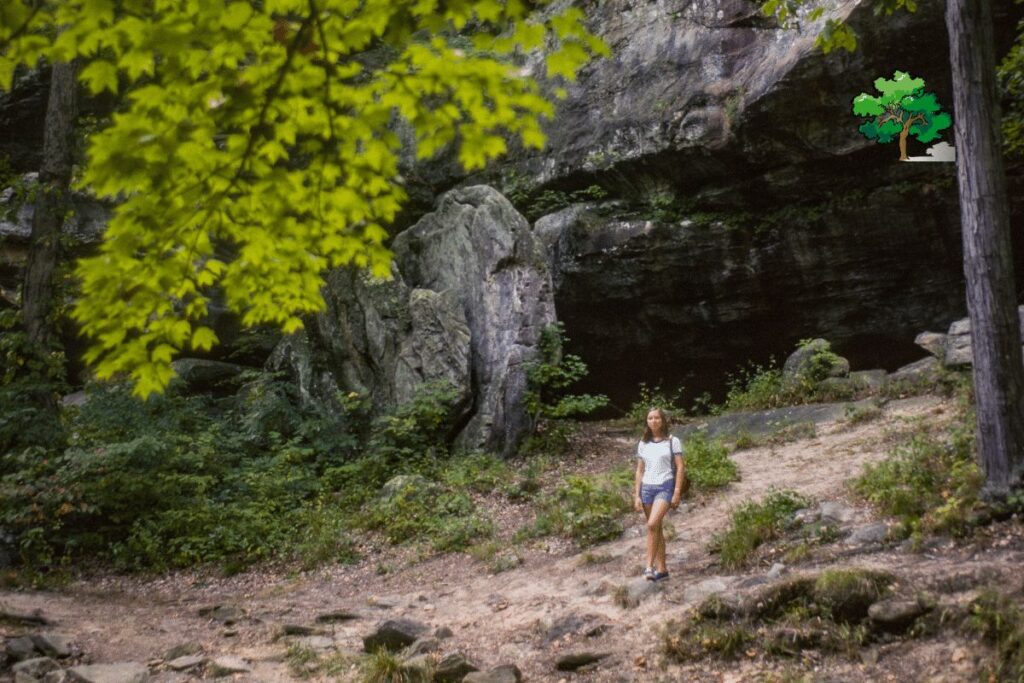
Whether you’re seeking the thrill of challenging inclines or the serenity of gentle pathways, Shawnee has a trail tailored for your adventure.
In our extensive exploration, we’ve embarked on numerous trails that each tell their own story of nature’s grandeur.
From the melodious murmurs of the Jackson Falls Trail and the iconic grandeur of the Garden of the Gods to the enchanting wilderness of Lusk Creek and the historical intrigue of Millstone Bluff Archaeological Area, every step taken unveils a new chapter of Shawnee’s tale.
But don’t just take our word for it. Dive into a detailed journey of these trails and more in our comprehensive guide to 19 of our favorite hiking trails in Shawnee National Forest. This guide will not only satiate your wanderlust but also provide essential tips and insights to ensure you make the most of your hiking experience.
Beyond the paths, the forest promises an abundance of wildlife sightings, immersive camping experiences, and vast wilderness areas, turning every visit into a memorable escapade.
Wildlife on the Shawnee National Forest Trails
The trails of Shawnee National Forest are more than just pathways through serene landscapes; they are corridors teeming with life, offering intimate glimpses into the world of its diverse wildlife.
Each trail, with its unique ecosystem and terrain, provides habitats for an array of creatures, ensuring that every hike is an opportunity for a memorable wildlife encounter.
The Jackson Falls Trail, with its rippling streams and cascading waters, is a haven for amphibians.
Here, one can often spot Eastern Gray Treefrogs perched on wet rocks or hear the distinctive calls of various frog species echoing through the woods.
If you tread quietly, the moist banks of the stream might also reveal the camouflaged presence of the Eastern Box Turtle.
Garden of the Gods, with its towering rock formations, provides ideal nesting spots for birds of prey.
As you navigate its rugged terrains, don’t forget to cast a glance upwards.
It’s not uncommon to spot Bald Eagles and Peregrine Falcons soaring against the backdrop of the sky, scanning the ground below for their next meal.
The dense foliage of Lusk Creek Wilderness is a sanctuary for mammals. White-tailed Deer, often with fawns in tow during spring, are frequently seen grazing at clearings or darting through the underbrush.
The nocturnal hiker might even be rewarded with a fleeting glimpse of a bobcat or hear the distant howl of a coyote.
Panther Den Wilderness is a realm of shadows and whispers. The mysterious caves and crevices here are home to the endangered Indiana Bat, which can often be seen flitting around at dusk.
Every trail in the Shawnee National Forest is a wildlife adventure waiting to unfold.
However, while these encounters are exhilarating, it’s essential to remember the golden rule: observe from a distance, ensuring that the wild remains undisturbed and as enchanting as nature intended it to be.
Camping in Shawnee National Forest
When it comes to immersing oneself in the raw beauty of the Midwest, few experiences can rival camping in Shawnee National Forest. With a landscape as varied as its history, Shawnee offers a camping experience that beautifully melds adventure with tranquility.
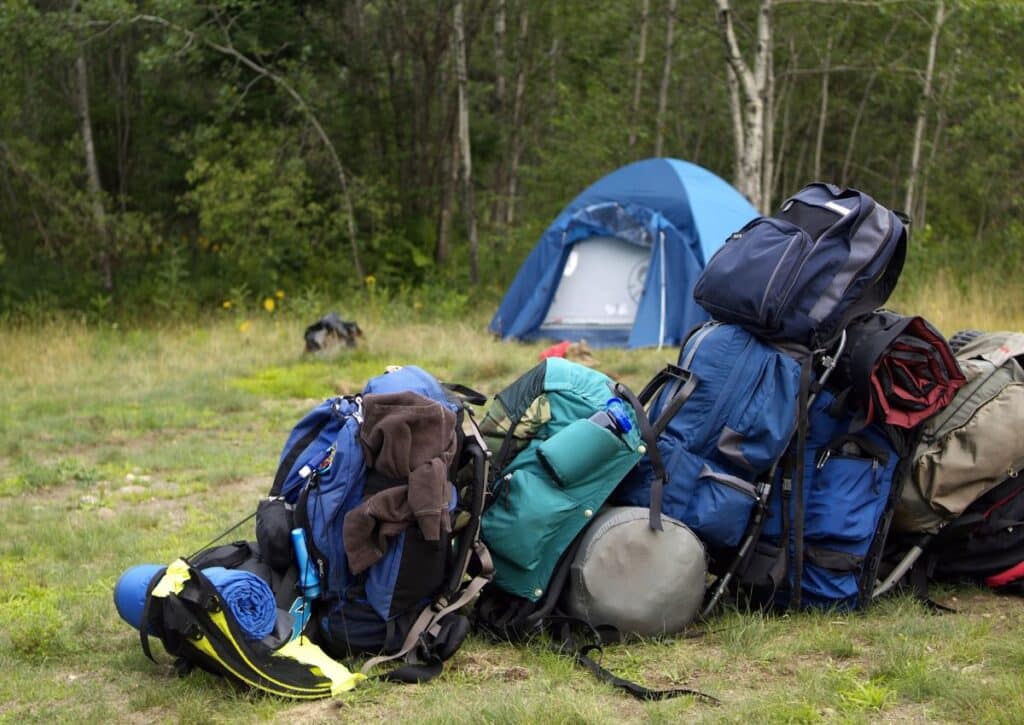
Types of Camping
Diverse camping opportunities await in Shawnee. For the true nature enthusiast, Primitive and Dispersed Camping allows you to set up camp in the heart of the forest, away from the usual trappings of modern campgrounds.
This type of camping is ideal for those seeking solitude and a deeper connection with nature. Remember, though, it requires a higher degree of preparedness and leaves-no-trace commitment.
For those who prefer a mix of nature and comfort, RV Camping is available, ensuring you have a cozy retreat after a day of exploring. Modern amenities make the experience comfortable without taking you far from the forest’s embrace.
Then there are the Campgrounds – well-maintained spaces with designated camping spots. Each has its own charm, some closer to water bodies and others nestled amidst dense woods. For a comprehensive list and our personal favorites, dive into Our 7 Favorite Campgrounds in Shawnee National Forest.
Rules and Regulations
To ensure a harmonious experience, both for nature and campers, it’s essential to familiarize oneself with the forest’s camping regulations. Always make sure your campfires are managed responsibly and extinguished before leaving.
Respect the designated camping zones and be mindful of the flora and fauna around. Remember, you’re a guest in their home.
From the stunning vistas that greet you every morning to the symphony of nature that lulls you to sleep, camping in Shawnee National Forest is a transformative experience.
With the right knowledge and respect for nature, it promises memories that last a lifetime.
Discover More
For an in-depth exploration of all that Shawnee National Forest camping has to offer, including detailed guides on specific campgrounds, recreational areas, and activities, explore our comprehensive guide here. Experience the magic of Shawnee like never before!
Wilderness Areas in Shawnee National Forest
For those who thirst for raw, untouched nature, Shawnee National Forest offers a pristine landscape that has stood the test of time. As one ventures deeper into its heart, the real essence of wilderness comes alive, inviting and inspiring in equal measure. This guide uncovers the most enchanting spots in Shawnee National Forest that promise a true wilderness experience.
Spotlight on Shawnee’s Wilderness:
Garden of the Gods: Beyond its iconic sandstone formations, it offers a natural sanctuary for diverse bird species and forest creatures.
Bell Smith Springs: Renowned for its mesmerizing waterfalls and deep canyons, it’s a haven for aquatic life and other woodland residents.
Cache River State Natural Area: Its wetlands resonate with the calls of waterfowl, amphibians, and the serene beauty of ancient cypress trees.
LaRue Pine Hills Research Natural Area: The varied elevations here create a dynamic habitat that attracts both lowland and highland species – a true delight for bird enthusiasts.
Cave in Rock State Park: Apart from its intriguing caves, the surrounding landscapes house bats, unique avian species, and creatures adapted to its unique microenvironments.
Ferne Clyffe State Park: As you traverse its diverse landscapes, from cascading falls to tranquil ponds, anticipate a vivid display of wildlife in their natural habitat.
Little Grand Canyon: The canyons and ridges here present an intricate ecosystem that plays host to a myriad of birds and mammals.
The Shawnee National Forest, with its sprawling landscapes and rich biodiversity, stands as a testament to the wonders of the natural world. Whether you’re a budding naturalist, an ardent birdwatcher, or simply someone who appreciates the raw beauty of nature, Shawnee promises a spectrum of unparalleled experiences.
For a deeper dive into these wilderness gems, explore our comprehensive guide here. Experience the unbridled magic of Shawnee’s wilderness realms!
15 Things to Do in Shawnee National Forest
1. Hiking in the Garden of the Gods:
Step into the Garden of the Gods and you’re walking in a living gallery sculpted by nature. Towering sandstone formations rise majestically, inviting explorers to meander through its pathways.
Each trail reveals a new perspective, from panoramic views stretching to the horizon to intimate encounters with millennia-old rock art. As sunlight plays upon the rugged surfaces, it brings alive tales of ancient times, casting shadows that dance with the day.
Whether you’re an avid hiker or someone seeking a tranquil escape, the Garden promises both challenge and serenity in its embrace. It’s not just a hike; it’s a journey through time.
2. Capture the Shawnee National Forest Bigfoot:
Amidst the dense foliage and echoing bird calls, a legend awaits – the Shawnee Bigfoot. While the tales of this elusive creature are woven into the fabric of many forests, Shawnee offers a unique chance to ‘capture’ him.
Venture to the heart of the forest and come face to face with the famed Bigfoot sculpture. Perfect for a playful photo op, it’s a reminder of the myriad stories and myths that forests inspire. Laugh, pose, and snap a shot with this legendary beast.
It’s an encounter that promises fun and a dash of mystery.
3. Indulge at Garden of the Gods Outpost:
Imagine rounding off an exhilarating hike with the sweet taste of creamy ice cream, melting perfectly with each bite. The Garden of the Gods Outpost offers this and more. It’s not just a pit-stop, but a treasure trove for the senses.
As you savor flavors, your eyes can feast on an array of local crafts and souvenirs, each echoing tales of the forest’s charm.
And while the ice creams are a delectable draw, it’s the warm ambiance, friendly staff, and the promise of a delightful break that truly makes the Outpost a must-visit spot in Shawnee.
4. Picnic at the Golden Circle:
Imagine a setting where the sky’s vastness meets the vibrant hues of nature, and where every whisper of the wind serenades you. Welcome to the Golden Circle, Shawnee’s prized picnic spot.
As you unfurl your blanket and lay out a feast, you’re not just having a meal; you’re creating memories. Surrounded by verdant landscapes, it becomes easy to lose track of time and simply revel in the moment.
Whether it’s a family gathering or a romantic escapade, the Golden Circle promises an experience bathed in nature’s golden glow, making every bite and every laugh truly special.
5. Delve into Rim Rock:
The Rim Rock trail is more than just a path; it’s a bridge to a bygone era. With each step, you tread on ancient grounds, once inhabited by Native Americans who left behind stunning petroglyphs, their messages from the past.
The trail winds through dramatic rock formations and lush overhangs, each corner offering a new vista, a fresh perspective.
The air is thick with stories, and as the rocks loom overhead, casting dappled shadows on the path, you can’t help but feel a deep connection to those who walked here before. This isn’t just a hike; it’s a journey into history.
6. Admire Ox-Lot Cave:
Tucked amidst the dense foliage of Shawnee lies the Ox-Lot Cave, a testament to nature’s mysterious ways. Stepping inside is like entering another realm – one where stalactites grace the ceiling and the earthy scent of minerals fills the air.
The cave, with its intricate formations, stands as a living chronicle of geological events that shaped it over eons.
While the forest outside bathes in sunlight, the cave offers a serene, cool respite. Whether you’re a geology enthusiast or someone seeking solace, Ox-Lot Cave promises an encounter with the quieter, introspective side of Shawnee.
7. Water Activities at Pounds Hollow:
Imagine a serene water body, nestled amidst the verdant embrace of Shawnee’s trees, shimmering under the golden sun. Welcome to Pounds Hollow, where the rhythm of water meets the whispers of the forest.
This oasis offers a refreshing dip for swimmers, while anglers can cast their lines in the hope of a rewarding catch.
And if you just wish to soak in the tranquility, set up a campsite by the shore, letting the gentle lapping of waves lull you to sleep. Whether you’re skimming its surface on a boat or picnicking by its side, Pounds Hollow promises a soul-soothing experience.
8. Cave in Rock Exploration:
Steeped in legends and framed by the mighty Ohio River, the Cave in Rock stands as a sentinel, guarding tales of river pirates and hidden treasures. Its yawning entrance invites the curious, leading them into cavernous chambers where echoes of the past linger.
Inside, the cool air contrasts with the warmth outside, as you traverse pathways shaped by nature’s relentless force. Every nook and cranny narrates a story, be it of ancient hideouts or geological wonders.
A visit here isn’t just about admiring a natural formation; it’s about stepping into chapters of history and intrigue.
9. The American Fluorite Museum:
Dive deep into the world of minerals at the American Fluorite Museum, a gem in Shawnee’s crown. Fluorspar, with its vivid hues, has left an indelible mark on the region, and this museum celebrates its legacy.
Roll up your sleeves and embark on a unique adventure, digging for these radiant gems. Each find is a story, a tangible piece of Earth’s vibrant tapestry.
Beyond the thrill of discovery, the museum educates visitors about the mineral’s significance and its impact on the region’s history. A visit here promises a blend of learning, exploration, and the unmatched joy of unearthing nature’s treasures.
10. Step into the Iron Furnace:
Whispers of a bygone era emanate from the walls of the Iron Furnace, an emblem of Shawnee’s industrious past. Constructed in the 19th century, this furnace once roared with life, melting iron ore and molding the region’s industrial narrative.
Now, standing still amidst the verdant surroundings, it beckons history enthusiasts and curious souls alike. As you explore its sturdy chambers and archaic architecture, you’ll be transported to a time when metallurgy was the beating heart of the community.
A visit here isn’t merely about observing an old structure; it’s about connecting with a chapter of Shawnee’s rich heritage.
11. Traverse the Little Grand Canyon:
Venture into Shawnee’s Little Grand Canyon and let nature’s grandeur envelop you. Carved by centuries of water erosion, this canyon is a masterpiece with its deep gorges, layered rock formations, and breathtaking panoramas.
As you navigate its trails, each twist and turn unveils a new spectacle – from cascading waterfalls to precariously perched lookout points. The play of sunlight on the rugged cliffs paints a dynamic landscape, changing hues with the passing hours.
Beyond its visual allure, the canyon tells a tale of time, perseverance, and the relentless forces of nature that have sculpted its majesty.
12. Walk on the Wild Side at Pomona Natural Bridge:
Tucked away in the heart of Shawnee, the Pomona Natural Bridge is nature’s poetry in stone. Spanning a staggering 90 feet, this sandstone formation seems to defy gravity, creating a bridge amidst the dense green canopy.
Walking across, you’ll feel the thrill of being suspended in nature, with the forest’s sounds enveloping you. Birds chirp, leaves rustle, and the distant murmur of wildlife punctuates the silence.
The area surrounding the bridge is equally enchanting, offering tranquil spots for reflection and relaxation. For those seeking both adventure and serenity, Pomona Natural Bridge promises an experience like no other.
Final Thoughts
The Shawnee National Forest stands as a testament to nature’s boundless wonders and the rich tapestry of American heritage. From its diverse wildlife to the labyrinth of trails, every step within its confines promises discovery.
Whether you’re pitching a tent under a canopy of stars, delving into historical sites like the Iron Furnace, or simply relishing the serenity of spots like the Pomona Natural Bridge, Shawnee offers a multitude of experiences.
Its dynamic landscapes, ranging from the imposing formations at the Garden of the Gods to the tranquility of Pounds Hollow, ensure that adventurers, historians, and nature lovers alike find their sanctuary.
As you depart from its embrace, the memories forged amidst its majestic terrains will linger, urging a return. In the heart of Illinois, Shawnee National Forest stands not just as a destination, but as a journey into nature’s most profound offerings.

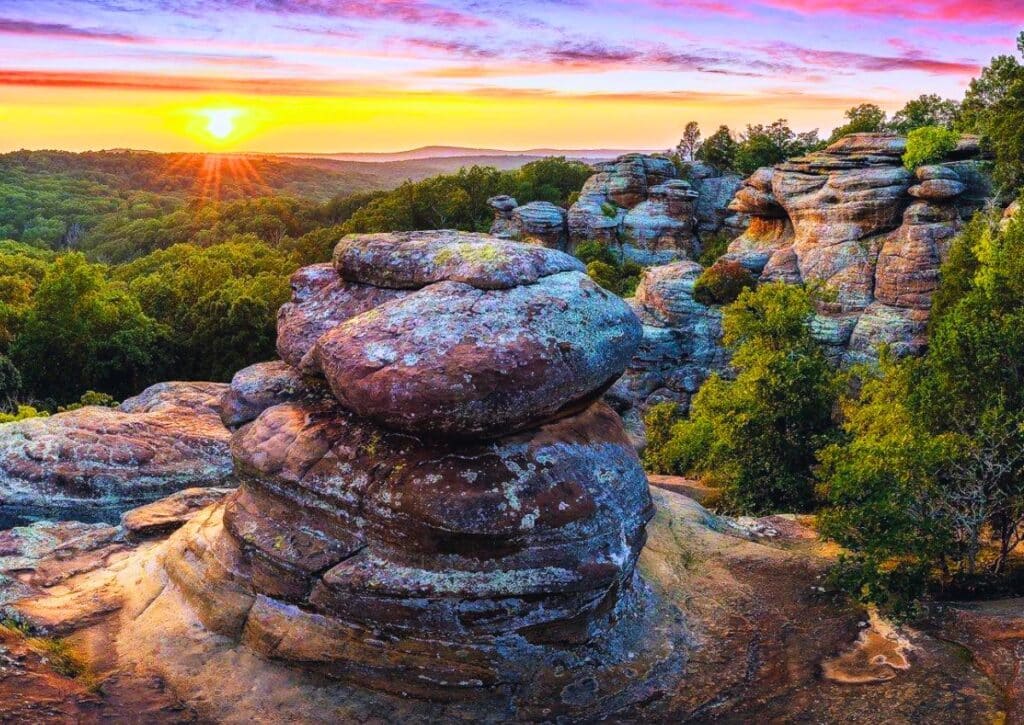

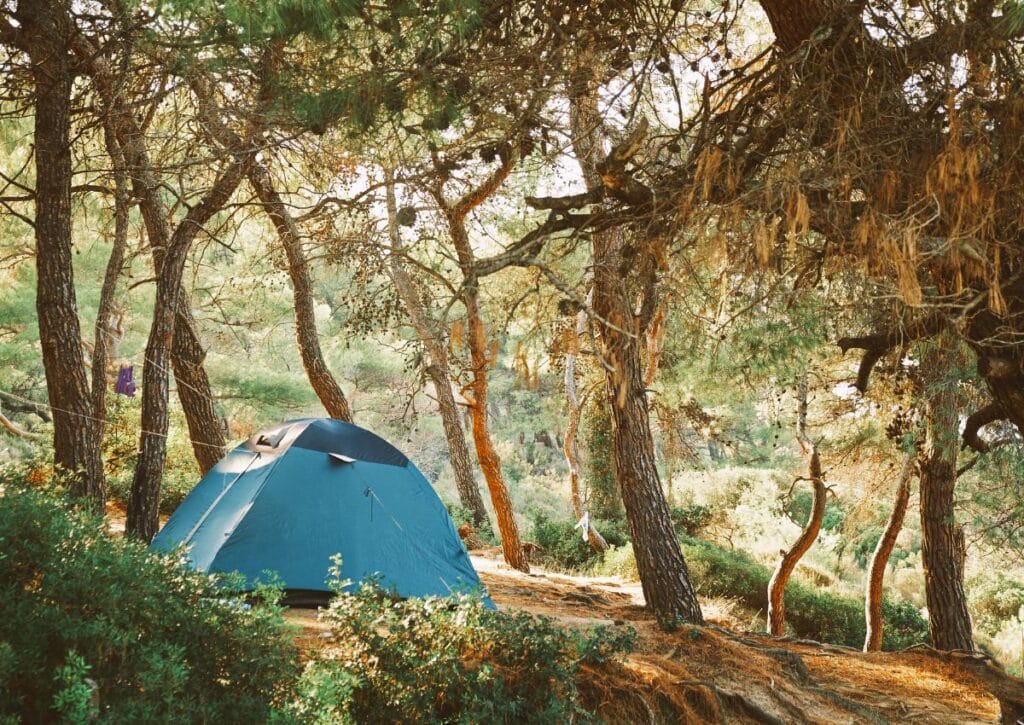
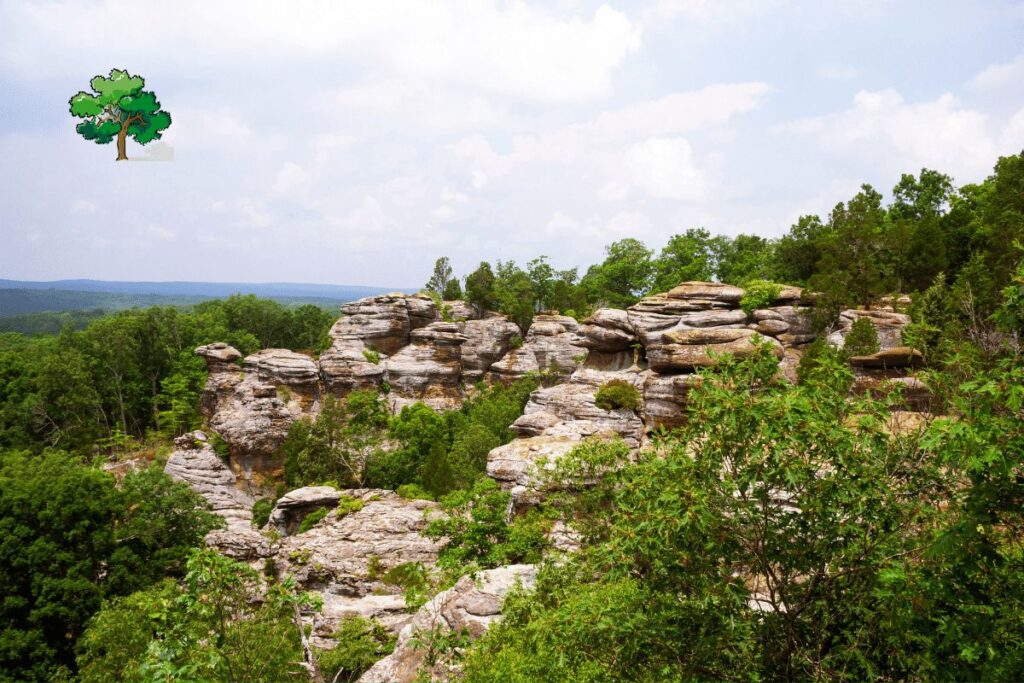
According to the Illinois Department of Natural Resources, there are no bears in the Shawnee National Forest. It is possible to see bears passing through Illinois, however. The last bear sighting was a bear sighted in Monroe County that then traveled through Clinton, Washington, and Franklin counties.
Hey Raymond, Thanks for your comment!
Well, we did see one just east of the Lusk creek area. They are very rare. Actually, this was the second time in the last decade we’ve seen them. One time was on the Glen falls road. I agree however, of late its been very hard spotting bears here.
Thanks for keeping us in check. Really appreciate it 🙂